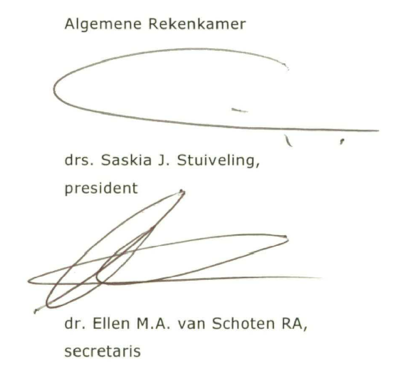An informative letter of Plasterk to the Second Chamber of the Dutch Parliament was released on Monday along with a letter dated November 28, 2013 from the Algemene Rekenkamer, The Dutch General Audit Chamber, which is very critical of the way that the Saba Statia Cable System (SSCS) had been set up by the RCN as a BV, a limited liability company that manages the fibre optic cable to St. Eustatius and Saba. President of the General Audit Chamber Saskia Stuiveling listed her objections which she sent to Dutch Minister of Home Affairs and Kingdom Relations Ronald Plasterk, being responsible for the RCN.
The Audit Chamber is of the opinion that the National Government Service (Rijksdienst Caribisch Nederland) on Bonaire, St. Eustatius and Saba, under the responsibility of the BZK Ministry, did not follow the proper procedure when it established SSCS in September 2012. “The documents that we received from you insufficiently indicate through which checks and balances the public interests (availability, reliability and accessibility) will be guaranteed.” As a result, the Audit Chamber and the Dutch Parliament were not given the opportunity to render their opinion on the setting up and structure of this company beforehand, stated Stuiveling. This is in conflict with the law, the Compabiliteitswet 2001.
The Audit Chamber also objected to the transfer of the shares of SSCS, currently owned by the Dutch Government (while the current shares of SSCS BV are now in the hands of a Foundation Administratiekantoor HVBN), to the public entities St. Eustatius and Saba so the islands become the owner of the company that operates the sea cable. “Government cannot execute the regular shareholders’ authorities regarding this company because government does not keep the shares.
Also the Audit Chamber cannot carry out any audits at the company. We consider this situation highly undesirable and therefore urge you to put the shares in the name of government,” Stuiveling stated in her letter to Plasterk.
The Audit Chamber further urged Plasterk to provide a “transparent explanation” to Parliament about the cost involved, the property and operation issue, and what the final situation looks like.
The information in the letter of Plasterk is that the total cost of designing, developing, laying, securing and protecting of the sea cable that connects St. Eustatius and Saba with St. Kitts, and in the future also St. Maarten and St. Barths, was 8.9 million euros, or US $12.4 million, Plasterk informed Parliament on Monday. This money did not concern a one-time investment, but the Ministry of Home Affairs and Kingdom Relations BZK made it available in several allotments between 2011 and 2013. Initially, the Dutch Government reserved 4.1 million euros for the design and laying of the cable. In 2012 an additional 3.7 million euros was made available and a further 1 million euros in 2013. Spare parts have been bought, an alternative landing possibility realised, adaptations were made to create local connections with the operators, and a fee has been paid so the services of a cable repair ship can be contracted if necessary.
Plasterk also explained in his letter to the Parliament that the sea cable is still owned by the Dutch Government as was already written in the letter of the Rekenkamer, but that it is the intention to transfer this ownership to SSCS and to reassign the shares to the public entities in due time.
An agreement will be made with St. Eustatius and Saba in 2014. The agreement will define the conditions that the islands have to comply with before the transfer of the shares. These conditions will be linked to, among others, the continuity of government, the guaranteeing of the open access character of the cable and the prices of internet access. The transfer will probably take place in phases.
Possibly, the Dutch Government will keep a part of the shares capital so it will still have a say in SSCS, stated Plasterk who promised to keep Parliament abreast of the developments. SSCS will not have a profit-making character. Possible profits or losses may lead to an adaptation of the tariffs, or the setting up of a buffer for maintenance and extraordinary cable management measures.
The current operational cost of SSCS, some 365,000 euros in 2013, equals the estimated income of the company. The sea cable connection between St. Eustatius, Saba and St. Kitts has been completed. The last phase of laying the sea cable can start when St. Maarten has issued a permit for the landing. The cable will also land in St. Barths as an additional alternative. The process should be completed by mid-2014. “This means that St. Eustatius and Saba will be connected to the international sea cable structure in three separate locations,” stated Plasterk. This will increase reliability and create possibilities to purchase from different parties.
The Minister stated that the existing sea cable has already made the internet connection a lot faster on St. Eustatius and Saba. Before, the islands had a 256Kb to 512Kb connection. This has been increased to 1Mb. The internet use, measured in volume traffic, has tripled while the price level per unit traffic has been reduced to a third of the original level, according the Minister.

 Archive of posts from Saba-News.com Archive Saba News
Archive of posts from Saba-News.com Archive Saba News